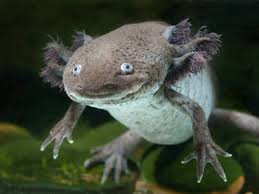Effect on survival and growth (weight and length) of Ambystoma Mexicanum (Shaw Y Nodder, 1798) of three probiotics obtained from their gastrointestinal tract
Keywords:
Ambystoma mexicanum, Bacillus subtilis, Lactobacillus sp. Lactococcus lactis, probiotic, survivalAbstract
The effect of probiotic strains (Lactococcus lactis; Lactobacillus sp and Bacillus subtilis), isolated from the intestinal tract of Ambystoma mexicanum on survival and growth of this amphibian was evaluated. 120 larvae with a weight of 3.0 ± 0.26 g and length of 1.5 ± 0.62 cm, were fed with probiotic strains (107 CFU mL-1) bioencapsulated in Artemia franciscana metanauplii. Diets were handled in triplicates (10 organisms per beaker) during 60 days. Every 15 days were measured and weighed to obtain the intrinsic growth rate (IGR) and absolute growth rate (AGR). Analysis of variance and Condition Factor was performed. Organisms that obtained a higher weight and length were fed with B. subtilis (5.86 ±0.42 g; 4.56 ±0.27 cm). Diets with L. lactis and B. subtilis presented the best Condition Factor (KM). Variance analysis showed significate differences (P<0.001) between all treatments. Axolotls fed with probiotics presented survival <85%, while control was 60%.References
Bagheri, T., Hedayati1, S.A., Yavari1, V., Alizade, M., Farzanfar, A., 2008. Growth, survival and gut microbial load of
Rainbow Trout (Onchorhynchus mykiss) fry given diet supplemented with probiotic during the two months of
first feeding. Turk. J. Fisher. Aquat. Sci., 8, 43-48.
Balcázar, J.L., De Blas, I., Ruiz-Zarzuela, I., Cunningham, D., Vendrell, D., Múzquiz, J.L., 2006. The role of probiotics
in aquaculture. Veter. Microbiol., 114, 173-186.
Bidhan, C., De Meena, D.K., Behera, B.K., Das, P., Mohapatra, P.K., Sharma, A.P., 2014. Probiotics in fish and
shellfish culture: immunomodulatory and ecophysiological responses. Fish Physiol Biochem DOI
1007/s10695-013-9897-0.
Culp, C., Falkinham, J., Belden, L., 2007. Identification of the natural bacterial microflora on the skin of eastern
newts, bullfrog, tadpoles and redback salamanders. Herpetolog., 63(1), 66-71.
Gatesoupe, F.J., 1994. Lactic acid bacteria increase the resistance of turbot larvae, Scophthalmus maximus, against
pathogenic vibrio. Aquat. Liv. Res.,7, 277-282.
Giri, S.S., Sukumaran, V., Oviya, M., 2013. Potential probiotic Lactobacillus plantarum VSG3 improves the growth,
immunity, and disease resistance of tropical freshwater fish, Labeo rohita. Fish Shellfish Immunol 34(2), 660–
Gullian, M., Thompson, F., Rodríguez, J., 2004. Selection of probiotic bacteria and study of their inmunostimulatory
effect in Pennaeus vannamei. Aquacult., 233, 1-14.
Norma Oficial Mexicana (NOM), NOM-059- SEMARNAT-2010., 1994. Protección ambiental-Especies nativas de
México de flora y fauna silvestres-Categorías de riesgo y especificaciones para su inclusión, exclusión o
cambio-Lista de especies en riesgo. Diario Oficial de la Federación, 77pp.
Okelley, J., Blair, J., Benjie, G., Murdock, C., 2010. Analysis and Classification of the intestinal microbiota of the
Slimy Salamander by 16S ribosomal DNA sequencing. J. Alabam. Acad. Sci. Publ., Volume: 81 Source Issue, 3-
Otto, P.S.E., 1998. Conservación del ajolote (Ambystoma mexicanum) mediante su cultivo y siembra en el Parque
Ecológico de Xochimilco. CONABIO. Informe Final de Proyecto. J080.
Pryor, S.P., 2008. Anaerobic bacteria isolated from the gastrointestinal Tracts of bullfrog tadpoles (Rana
catesbeiana). Herpetolog. Conservat. Biol., 3(2), 176-181.
Rengpipat, S., Rukpratanporn, S., Piyatiratitivorakul, S., Menasaveta, P., 2000. Immunity enhancement in black
tiger shrimp (Penaeus monodon) by a probiont bacterium (Bacillus S11). Aquacult., 191,271-288.
Rodríguez, J., Le Moullac, G., 2000. State of the art of immunological tools and health control of penaeid shrimp.
Aquacult., 191,109-119.
Stuart, S.N., Chanson, J.S., Cox, N.A., Young, B.E., Rodríguez, A.S.L., Fischman, D.L., Waller, R., 2004. Status and
trends of amphibian declines andextinctions worldwide. Sci., 306,1783–1786.

Published
How to Cite
Issue
Section
Copyright (c) 2015 M.D. M. del Carmen, C. M. Jorge, D.L. Andrade Ramón, C. M. Germán, A.M. Carlos Fernando, O.C. José Antonio

This work is licensed under a Creative Commons Attribution-NonCommercial-NoDerivatives 4.0 International License.



